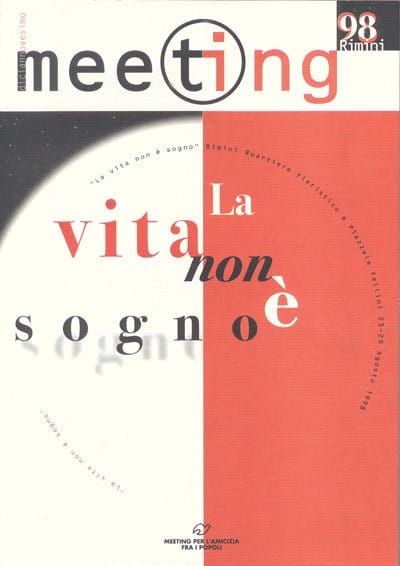
1998 Edition

Life is not a dream
'Life isn’t a dream and yet a lot of people think it is. Why? Because taking refuge in the abstract dimension of dreams, appearances, imagination and utopias, building an unreal or "spirit" world might seem like a solution. A solution to what? To the dramatic nature of the relation between people and reality. All the weak philosophy of the end of the millennium, with its culture of the void, the indefinite and the ephemeral glo-rifies dreaming. In dreams, human beings at-tempt to lose themselves, but only the culture of negativeness and uncertainty can acknow-ledge in the possibility of losing oneself and in escaping reality a way of solving life’s problems. Thus, these alienated human beings become ea-sy prey for power, which enchants them and sets them dreaming of a better world, that does not exist, in which people remain artificially trapped without even noticing. The pagans also believed in an abstract and all-enveloping entity, in spirits that lived in dreams. Never before like now, in the modern age, has society experienced a new paganism, asserted not only by New Age movements; a disguised, pantheist, spiritualist and ecological paganism that speaks of the infinite, at best, as of. something indefinite. The facts of life, the reality of the things we a-re obliged to face up to every day, bring human beings back down to size. The concrete aware-ness of the positiveness of their task and an i-deal passion make them capable of "changing, slightly or substantially, every step of their journey". The ideal is the most concrete things that exists and, as such, it is the contrary of dreams and utopia". Only by starting with a positive idea is it possi-ble to build something, but this idea must be formulated here and now, not put off until so-me future time and place. A rational and exi-stential return to reality is the condition requi-red to enable human beings to combat the idol of appearances and thus become fully aware that life is not a dream.'



